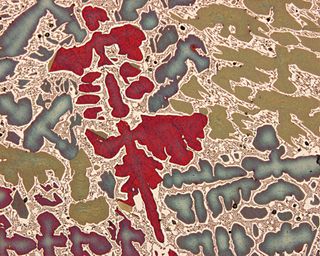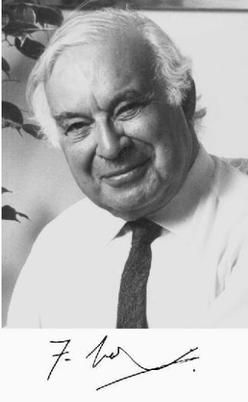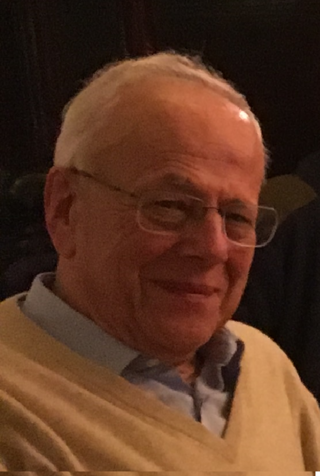Related Research Articles

Condensed matter physics is the field of physics that deals with the macroscopic and microscopic physical properties of matter, especially the solid and liquid phases, that arise from electromagnetic forces between atoms and electrons. More generally, the subject deals with condensed phases of matter: systems of many constituents with strong interactions among them. More exotic condensed phases include the superconducting phase exhibited by certain materials at extremely low cryogenic temperatures, the ferromagnetic and antiferromagnetic phases of spins on crystal lattices of atoms, the Bose–Einstein condensates found in ultracold atomic systems, and liquid crystals. Condensed matter physicists seek to understand the behavior of these phases by experiments to measure various material properties, and by applying the physical laws of quantum mechanics, electromagnetism, statistical mechanics, and other physics theories to develop mathematical models and predict the properties of extremely large groups of atoms.

Spectroscopy is the field of study that measures and interprets electromagnetic spectra. In narrower contexts, spectroscopy is the precise study of color as generalized from visible light to all bands of the electromagnetic spectrum.
Surface science is the study of physical and chemical phenomena that occur at the interface of two phases, including solid–liquid interfaces, solid–gas interfaces, solid–vacuum interfaces, and liquid–gas interfaces. It includes the fields of surface chemistry and surface physics. Some related practical applications are classed as surface engineering. The science encompasses concepts such as heterogeneous catalysis, semiconductor device fabrication, fuel cells, self-assembled monolayers, and adhesives. Surface science is closely related to interface and colloid science. Interfacial chemistry and physics are common subjects for both. The methods are different. In addition, interface and colloid science studies macroscopic phenomena that occur in heterogeneous systems due to peculiarities of interfaces.

Raman spectroscopy is a spectroscopic technique typically used to determine vibrational modes of molecules, although rotational and other low-frequency modes of systems may also be observed. Raman spectroscopy is commonly used in chemistry to provide a structural fingerprint by which molecules can be identified.
Solid-state physics is the study of rigid matter, or solids, through methods such as solid-state chemistry, quantum mechanics, crystallography, electromagnetism, and metallurgy. It is the largest branch of condensed matter physics. Solid-state physics studies how the large-scale properties of solid materials result from their atomic-scale properties. Thus, solid-state physics forms a theoretical basis of materials science. Along with solid-state chemistry, it also has direct applications in the technology of transistors and semiconductors.

Neutron diffraction or elastic neutron scattering is the application of neutron scattering to the determination of the atomic and/or magnetic structure of a material. A sample to be examined is placed in a beam of thermal or cold neutrons to obtain a diffraction pattern that provides information of the structure of the material. The technique is similar to X-ray diffraction but due to their different scattering properties, neutrons and X-rays provide complementary information: X-Rays are suited for superficial analysis, strong x-rays from synchrotron radiation are suited for shallow depths or thin specimens, while neutrons having high penetration depth are suited for bulk samples.

An F-center or color center or Farbe center is a type of crystallographic defect in which an anionic vacancy in a crystal lattice is occupied by one or more unpaired electrons. Electrons in such a vacancy in a crystal lattice tend to absorb light in the visible spectrum such that a material that is usually transparent becomes colored. The greater the number of F centers, the more intense the color of the compound. F centers are a type of color center.

Characterization, when used in materials science, refers to the broad and general process by which a material's structure and properties are probed and measured. It is a fundamental process in the field of materials science, without which no scientific understanding of engineering materials could be ascertained. The scope of the term often differs; some definitions limit the term's use to techniques which study the microscopic structure and properties of materials, while others use the term to refer to any materials analysis process including macroscopic techniques such as mechanical testing, thermal analysis and density calculation. The scale of the structures observed in materials characterization ranges from angstroms, such as in the imaging of individual atoms and chemical bonds, up to centimeters, such as in the imaging of coarse grain structures in metals.
Rappal Sangameswaran Krishnan was an Indian experimental physicist and scientist. He was the Head of the department of Physics at the Indian Institute of Science and the vice chancellor of the University of Kerala. He is known for his pioneering researches on colloid optics and a discovery which is now known as Krishnan Effect. He was a Fellow of the Indian Academy of Sciences, Indian National Science Academy and the Institute of Physics, London and a recipient of the C. V. Raman Prize. 25 students were guided by RSKrishnan for Ph D. Dr T N Vasudevan was the 25th. Prof Vasudevan retired from Physics Dept, Calicut University died on 2 August 2021

Frank Reginald Nunes Nabarro MBE OMS FRS was an English-born South African physicist and one of the pioneers of solid-state physics, which underpins much of 21st-century technology.
Brebis Bleaney was a British physicist. His main area of research was the use of microwave techniques to study the magnetic properties of solids. He was head of the Clarendon Laboratory at the University of Oxford from 1957 to 1977. In 1992, Bleaney received the International Zavoisky Award "for his contribution to the theory and practice of electron paramagnetic resonance of transition ions in crystals."
The Nevill Mott Medal and Prize is an award presented in selected years by the Institute of Physics in the United Kingdom, for distinguished research in condensed matter or materials physics. It was first established in 1997 thanks to a donation from Sir Nevill Mott's family. Sir Nevill Mott was one of the outstanding British condensed matter theorists and won a Nobel Prize in Physics in 1977. He died in 1996. The award consists of a silver medal and a prize of £1000.
Edward Roy Pike FRS is an Australian physicist, specializing in quantum optics.
The Institute of Solid State Physics of the Russian Academy of Sciences is a research institution, located in the small town of Chernogolovka near Moscow in Russia. Founded on February 15, 1963, the institute has grown to become one of the largest physics institutes in the country. Its main fields of research are condensed matter physics and materials science.

Rodney Loudon was a British physicist, best known for his work in quantum optics. He was Emeritus Professor of Theoretical Physics at the University of Essex. Loudon died on 25 December 2022, at the age of 88.
George Daniels Watkins is an American solid-state physicist.
Jiri Jonas is a professor emeritus of chemistry in the Center for Advanced Study at the University of Illinois at Urbana-Champaign. Jiri Jonas is considered a pioneer in the use of magnetic resonance imaging at high pressure, developing techniques to study the dynamic structure of liquids and proteins. This approach has been used in the study of the arc repressor, a DNA-binding protein containing 53 amino acid residues.

Giorgio Benedek is an Italian physicist, academic and researcher. He is an Emeritus Professor of Physics of Matter at University of Milano-Bicocca and Director of the International School of Solid State Physics at Ettore Majorana Foundation and Centre for Scientific Culture.
Ronald Fuchs was an American theoretical physicist and professor at Iowa State University. He is recognized for his work on electromagnetic properties of solids, light scattering of small particles and nonlocal optical phenomena.
References
- ↑ "University news". The Times . No. 62393. 1 March 1986. p. 10.
- ↑ Anon (2020). "Hayes, William" . Who's Who . A & C Black. doi:10.1093/ww/9780199540884.013.U19585.(Subscription or UK public library membership required.)
- ↑ "APS Fellow Archive". APS. Retrieved 7 October 2020.
